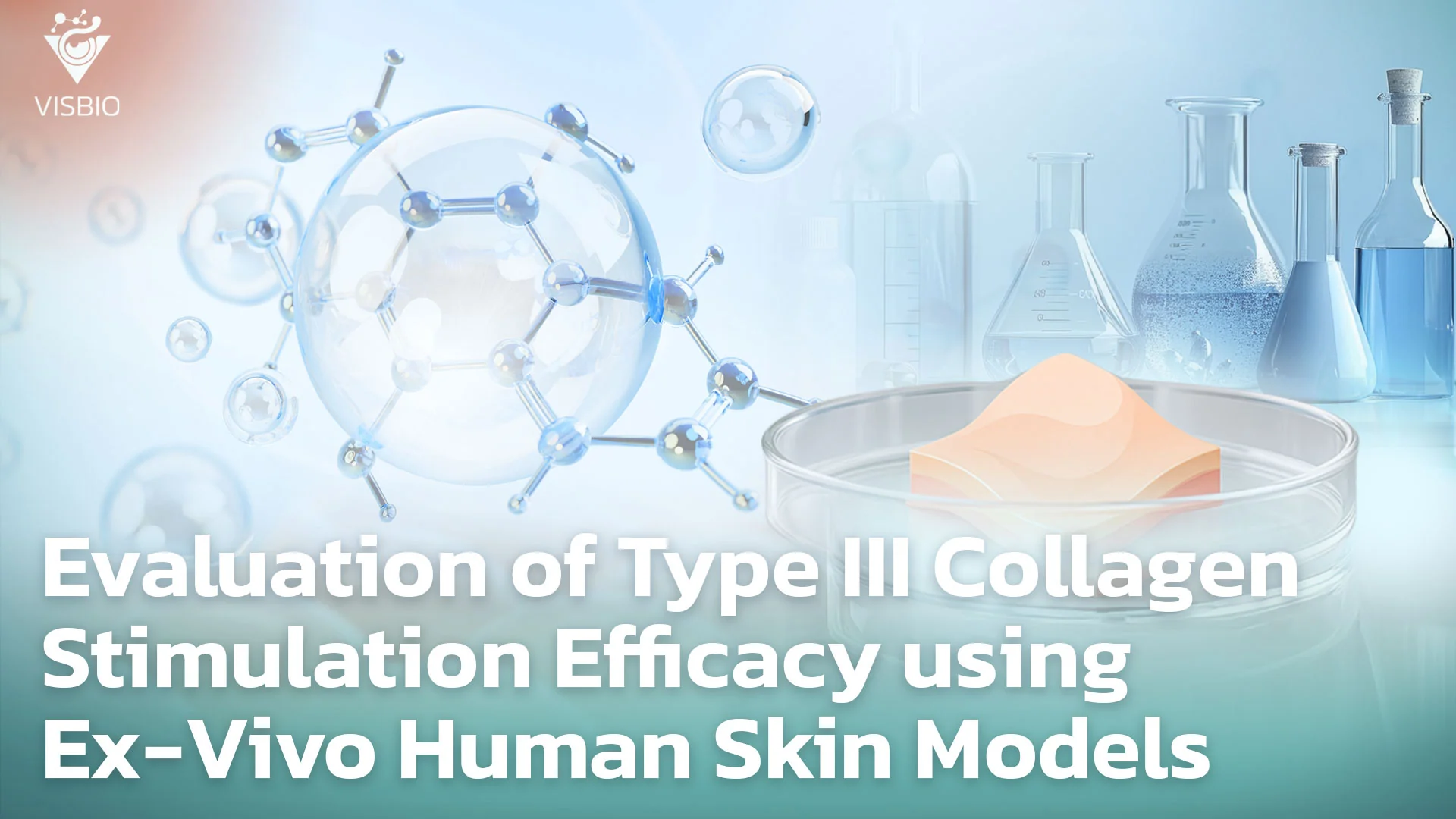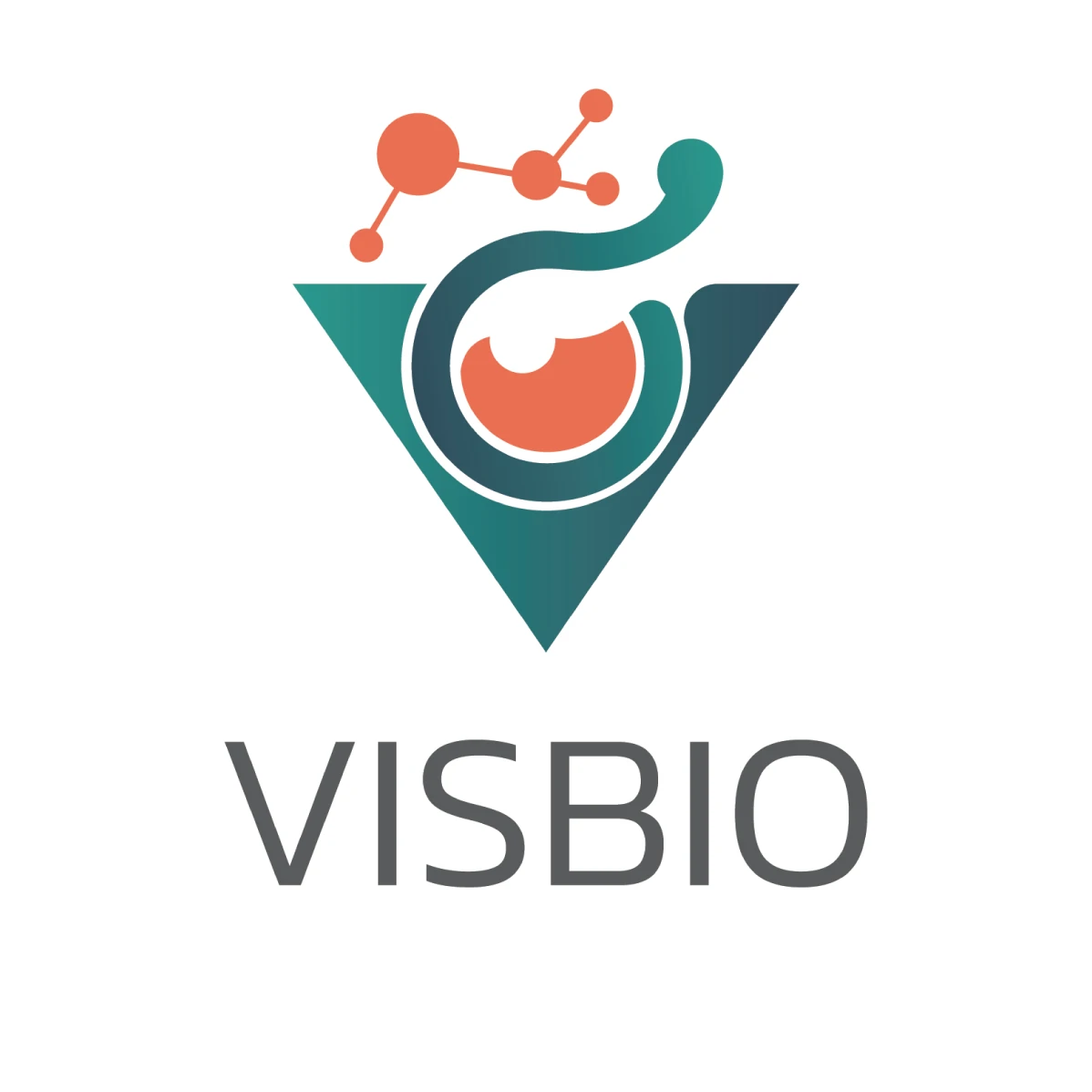
การประเมินประสิทธิภาพการกระตุ้นคอลลาเจน Collagen Stimulation Type III โดยใช้แบบจำลองผิวหนังมนุษย์นอกร่างกาย (Ex-Vivo Human Skin Models)
The development of skincare products aimed at anti-aging necessitates reliable efficacy evaluation. Type III collagen is a structural protein playing a significant role in skin elasticity, and its quantity decreases with age and the impact of external factors. Promoting the synthesis of this type of collagen is therefore an interesting mechanism in product development.
To test efficacy in this area, Ex-Vivo Human Skin Models, which utilize actual human skin samples cultured under controlled conditions, are useful tools. This is because these models better preserve the three-dimensional structure and physiological complexity of the skin compared to in vitro models, allowing for a more accurate assessment of the effects of test substances on the expression or synthesis of Type III collagen in an environment closer to real human skin. The data obtained from this testing thus serves as important supporting evidence to confirm product efficacy.
What is Collagen Type III?
Collagen Type III is an important structural protein classified as a fibrillar collagen. It is the second most abundant collagen in the human body after Type I collagen, accounting for approximately 5-20% of total collagen in the body and about 8-15% of collagen in the skin. The molecular structure of Type III collagen consists of three identical polypeptide chains (called alpha-1 chains), synthesized from the COL3A1 gene, twisted into a triple helix. This type of collagen is often found co-existing with Type I collagen in various tissues and often forms finer reticular fibers.
Functions and Importance of Type III Collagen
1.Structure and Elasticity: It is a major structural component in hollow organs such as large blood vessels, the uterus, and intestines, as well as skin, lungs, and heart. It plays a crucial role in providing elasticity to these tissues, allowing them to stretch and contract. It creates a flexible network capable of storing kinetic energy.
2.Wound Healing: It plays a particularly important role in the early stages of wound healing. The body initially produces a large amount of Type III collagen in the wound area, which is then gradually replaced by stronger Type I collagen.
3.Regulation of Collagen Fiber Size: It helps regulate the appropriate size and arrangement of Type I collagen fibers, which is essential for proper tissue structure formation.
4.Blood Clotting: It contributes to platelet aggregation, an important step in the blood clotting process.
5.Relationship with Youthfulness: Type III collagen levels in the skin decrease with age, which is associated with a decrease in elasticity and the formation of wrinkles. Fetal skin has a much higher proportion of Type III collagen than adult skin.
Biological Significance of Collagen Type III in Human Skin
Human skin is a complex organ, composed of various layers and the Extracellular Matrix (ECM), which performs important functions in maintaining skin structure and elasticity. The ECM consists of many proteins, with collagen being the main component, accounting for approximately 75% of the total skin mass. Collagen Type I is the most abundant type in the dermis and plays a crucial role in providing mechanical strength. Alongside Type I collagen is Type III collagen, which is often associated with youthful skin, the wound healing process (by forming reticular fibers), and contributes to skin elasticity and softness, particularly in the upper dermis (Papillary dermis).
The skin aging process, both intrinsic (e.g., age, genetics, and hormones) and extrinsic (e.g., exposure to UV radiation and pollution), leads to the degradation of collagen and elastin in the ECM. The decrease in these collagens, especially Type I and III collagen, results in observable changes such as wrinkles, sagging, and alterations in skin texture. Furthermore, pollution, particularly Particulate Matter (PM), can stimulate Matrix Metalloproteinases (MMPs), especially MMP-1, which accelerates collagen degradation, causing premature wrinkles and reducing skin elasticity. Therefore, stimulating collagen synthesis, especially Type III collagen, is an important goal in developing products and treatments for anti-aging and skin rejuvenation.
Ex-Vivo Human Skin Models for Efficacy Testing
The main advantage of Ex-Vivo models compared to in vitro models is their significantly higher physiological relevance. This is because Ex-Vivo models maintain the three-dimensional structure and cellular diversity in a natural environment, unlike cell cultures that lack the complex architecture and cell-matrix interactions found in real tissue. Compared to in vivo animal models, Ex-Vivo models use human skin directly, thus more accurately reflecting the response of human skin to various substances and significantly reducing ethical concerns associated with animal testing. Furthermore, the experimental environment can be controlled better than in vivo, allowing for precise study of the effects of specific variables.
Evaluating the Efficacy of Type III Collagen Stimulation: Suitable Examples
Type III collagen is another important type of collagen in the skin, often found together with Type I collagen and playing a role in providing elasticity and skin softness. It is typically found in high amounts in the skin of children and during wound repair. The decrease in Type III collagen with age leads to a loss of skin elasticity and the appearance of wrinkles. Stimulating the production of Type III collagen is therefore another approach to rejuvenating skin appearance to look younger and smoother.
Examples of suitable products, active ingredients, and topical medicines for this testing include:
1.Products:
- Anti-wrinkle products
- Products for post-procedure skin care: To promote the natural skin repair process, which involves Type III collagen production.
2.Active Ingredients:
- Peptides: Some types may have a specific target of stimulating Type III collagen production in addition to Type I.
- Certain Growth Factors and Cytokines: Those that play a role in tissue repair processes and collagen synthesis in the skin.
- Certain Plant Extracts: Some research indicates that certain tropical plant extracts may have the effect of stimulating the production of multiple types of collagen, including Type III.
- Other substances that promote skin repair: Substances with anti-inflammatory properties or that generally stimulate fibroblast activity.
3.Topical Medicine:
- Medicines used in the wound healing process: The production of Type III collagen is a crucial step in wound repair. Medicines that help accelerate this process can be evaluated using this method.
Literature:
- Dams, S. D., de Liefde-van Beest, M., Nuijs, A. M., Oomens, C. W. J., & Baaijens, F. P. T. (2011). Heat shocks enhance procollagen type I and III expression in fibroblasts in ex vivo human skin. Skin Research and Technology, 17(2), 167-173.
- Singh, D., Rai, V., & Agrawal, D. K. (2023). Regulation of Collagen I and Collagen III in Tissue Injury and Regeneration. Cardiovascular Medicine, 20(7), 5-16.
- Wang, C., Brisson, B. K., Terajima, M., Li, Q., Hoxha, K., Han, B., Goldberg, A. M., Liu, X. S., Marcolongo, M. S., Enomoto-Iwamoto, M., Yamauchi, M., Volk, S. W., & Han, L. (2019). Type III Collagen is a Key Regulator of the Collagen Fibrillar Structure and Biomechanics of Articular Cartilage and Meniscus. Matrix Biology, 85-86, 47-67.
- Mussi, L., Santiago, M. B. M., Padovani, G., Jesus, S. M., Makishi, G. L. A., Camargo Jr, F. B., & Magalhães, W. V. (2024). Antiaging Synergistic Effect of Vitamins C, A, and E Topical Organogel Formulation: Clinical and ex vivo Assessments Results. JOJ Dermatology & Cosmetics, 6(2), 555686.

